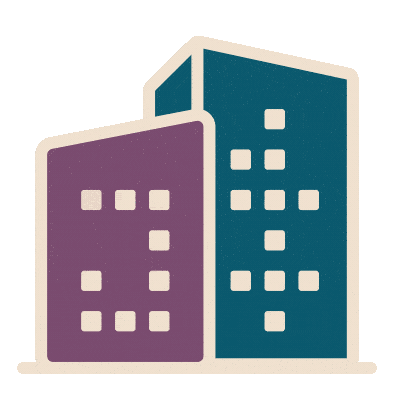Karim Elnabawy: Becoming a WELL AP made me think differently about the world around me
The WELL AP is more than just a credential and a community; it’s a learning experience.
Karim Elnabawy had been working in the sustainable design industry for nearly a decade when he chose to become a WELL AP, and the journey brought with it a new perspective.
“When I became a WELL AP, I started to think differently about the normal stuff in my room, my office and the buildings that I visit,” Karim says.
What new opportunities for design to encourage human health and well-being come from this new perspective? Karim shares his story.
1. How did you first hear about the WELL AP? What got you excited enough about it to apply, study and take the test?
The first time I heard about the WELL AP was from a 2014 announcement unveiling a formal collaboration between GBCI and IWBI. At the time, I didn’t know what IWBI was doing. That sent me down the path of exploring IWBI’s website, learning more about Delos, and digging into their objectives. What grabbed my attention was the focus on health and well-being in the built environment. I was a LEED AP at the time, but I found the WELL AP was something unique. It was my first time reading such useful materials that were also explained with simplicity and optimism. I was working in the sustainability industry, and I found the WELL approach particularly useful in advocating for clients in the Middle East to shift focus toward health and wellness, which is what I’m currently doing.
2. What’s one way becoming a WELL AP has impacted your life and/or career?
When I became a WELL AP, I started to think differently about the normal stuff in my room, my office and the buildings that I visit. From simple ease-of-access to drinking water, to the quality of our indoor air, or the availability of fitness equipment in the workplace, I feel more conscious and appreciative of the people-centric features around me. I feel the WELL Building Standard is truly important for raising both public awareness and public expectations about the people-centric design. In terms of professional development, I learned a lot during exam preparation, especially reading about other disciplines that are more engineering-oriented, such as MEP (mechanical, electrical and plumbing), acoustics, and lighting. I was able to deepen my understanding of how these disciplines intersect with sustainability, health and wellness.
3. What are some things you’ve been able to do (or you plan to do) as a WELL AP you couldn’t before? Why are those things important to you?
As a WELL AP, I started to make simple changes to my house with a level of understanding that I didn’t have previously. A lot of it was very simple, like increasing the number of plants in my house, focusing on the nutritional facts in my groceries and making sure healthy foods were visible and accessible in both my home and the office space. Once I understood the WELL concepts, I started to think outside of the box, taking note of concepts like the circular economy and the products that I consume, carbon footprint and how I’m impacting the environment with daily actions and practices, and my transportation habits, including walking and exercising more often. I believe developing a deep understanding of these concepts can really change your life.
4. Did anything about the WELL AP surprise you? What was it? How would you prepare WELL AP candidates for that?
I was surprised to see concepts like Mind, Comfort and Nutrition in a building standard. That came as a surprise for me, and it was a happy one indeed. When I first read about work policies, employee benefits, workplace design, ergonomics and telecommuting, I skeptical about their relevance to building design. That challenged me to think deeper and consider why these had been included. Upon reflection, it became clearer. First and foremost, buildings are created for people–and we spend more than 90% of our time inside them! WELL is all about designing better buildings for us, for the people who use them.
5. What’s something about the WELL AP–or the WELL movement in general–that isn’t often discussed, but you think deserves more attention?
I believe the WELL message is well communicated in most regions, but it still needs more exposure in the Middle East market. The market in the Middle East is eager to apply new sustainable strategies and meet international ESG goals and initiatives. Providing more support, tools, and guidance to WELL APs will allow them to communicate more effectively around the intersection of people-centric places and environmental sustainability. From a concepts and features perspective, I feel that more people should know about the Nutrition and Mind concepts. They need to be further publicized and shared with the public to make them more aware of what WELL can provide, that this isn’t “just” a standard for engineers and architects.
6. Do you have any advice you’d give potential WELL AP candidates?
My one piece of advice for WELL AP candidates: Enjoy reading the concepts and features. Don’t treat it as another credential or certification system that you will study and pass its exam. Instead, approach it as an opportunity to be engaged and informed. You’re starting an entertaining experience that will change your life positively. Develop that connection with the material, then start learning and understanding deeply the technicalities and feature requirements. Don’t forget to take practice tests to solidify your knowledge.
7. What does well-being mean to you? How do you incorporate it into your life and routine?
Having an active and healthy life, feeling comfortable in my day-to-day activities without any kind of stress, and being surrounded by nature, whether that’s plants, water features or a clean and minimalist white environment.
8. Is there a specific WELL concept, feature or set of features that have really resonated with you and that you’ve incorporated into your own life?
I have to say that the Mind concept has impacted me in my daily life. It touches on a couple of basic human needs and essentials, including how we sleep, how to avoid stress and tips for better understanding and approaching mental health.
9. How do you think COVID-19 has impacted your WELL AP practice and approach? How do you think that will change going forward?
With the COVID-19 pandemic, I thought this could drive a large global push to adopt the WELL Building Standard, and we have seen that. The introduction of the WELL Health-Safety Rating was brilliant, because it empowered developers to embrace health and well-being in their buildings on a much shorter time frame than the full WELL Building Standard. That allowed many developers and clients to apply WELL more quickly, while increasing public awareness. Organizations have been prioritizing health and well-being in the workplaces and indoor environments. COVID-19 will end, but the increased awareness about health and well-being–and the improvements to shared spaces that came out of it–won’t.







